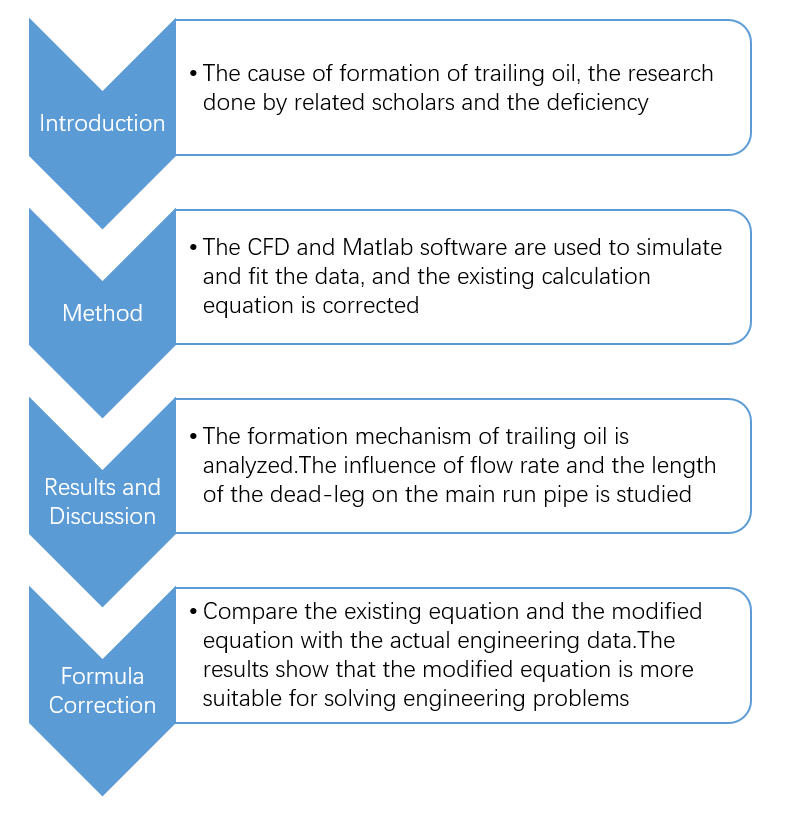Trailing oil is the tail section of contamination. There are two main reasons for the formation of trailing oil, one is the effect of laminar flow boundary layer, the other is the outflow of the preceding batch remained in the dead-legs. In the batch transportation of refined oil, under the action of viscous force, the preceding batch forms laminar boundary layer near the pipe wall and stays on the pipe wall, resulting in the phenomenon of contamination trailing and formation of trailing oil. When oil passes through the valve chamber of the oil transportation station, dead-leg will be formed. Due to gravity and convection diffusion, preceding batch flowing from dead-legs will form trailing oil in the pipeline. The phenomenon of trailing oil exists in the process of batch transportation, which will have an effect on the quality of oil. In this paper, Reynolds time-averaged method is used to simulate turbulence.Computational Fluid Dynamics(CFD) software is used to simulate different flow rates and bypass lengths to obtain contamination-related experimental data.Matlab software is used to perform multi-nonlinear regression for the oil substitution time, the length of the bypass and the flow rate. The formula for calculating the length of the trailing oil produced by the dead-leg is obtained. The modified formula for calculating the length of the contamination is obtained by combining the existing formula for calculating the length of the contamination.

